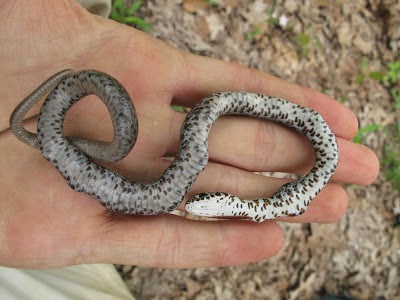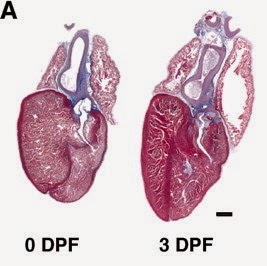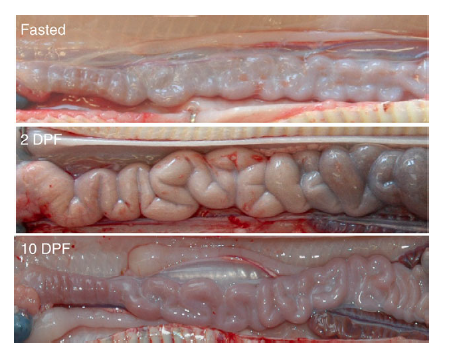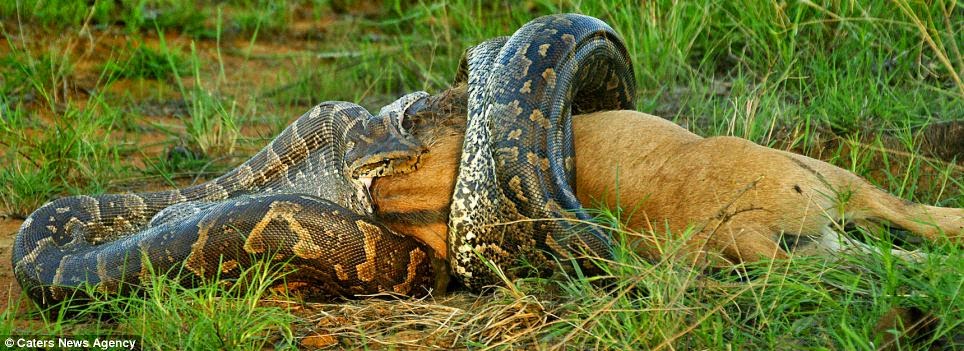Click here to read this post in Spanish
Haga clic aquí para leer este blog en español
Alternate title suggested by David Steen: Why snakes might benefit from holding it
Poop is what's left behind after your gut has extracted all the nutrients it can from a meal. The ability of a snake's gut to extract nutrients from its prey can change a lot as the gut itself is rebuilt following a meal. Specifically, it is highest following feeding and tapers off as physiology and morphology return to their pre-feeding states. Normally, once food has been reduced to poop, it doesn't hang around for long. This is true in mammals and birds and in some snakes, including ratsnakes, which normally take about two days between eating and pooping. Even that's relatively long compared with we humans, who are clinically constipated after three days. Other relatively slender or arboreal snakes such as bush and tree vipers (3-7 days) and tree pythons (~6 days) poop fairly regularly, and fecal retention time is at a bird-like minimum of 23 hours in the slender Hispaniolan Pointed-nosed Snake (Uromacer oxyrhynchus). But in other snakes, particularly in heavy-bodied species of henophidians and especially in terrestrial vipers, poop stays in the hindgut for months, even when they are fed often. The maximum values recorded by Lillywhite for boas and pythons fed mice are impressive: 76 days in an Emerald Tree Boa (Corallus caninus), 174 days in a Burmese Python (Python molurus), and 386 days in a Blood Python (P. curtus). For vipers, the figures are just as astounding: 116 days for a Puff Adder (Bitis arietans) and 286 for a Rhinoceros Viper (B. nasicornis) are among the longest, although nothing holds a candle to the heavyweight champion: one Gaboon Viper (B. gabonica) in Lillywhite's dataset that didn't poop for 420 days!
The intestine of a snake can hold a lot of poop. Lillywhite & colleagues measured this by pumping (dead) snake intestines full of saline and found that an average viper hindgut can hold about twice as much total volume as that of a ratsnake. The cumulative mass of the poop stored by the vipers in their study totaled between 5 and 20% of the total body mass of the snakes. In humans, this kind of thing would cause an awful, awful death (some say that's what happened to Elvis). Why did these snakes do this? Lillywhite and colleagues put forth what they called the adaptive ballast hypothesis to explain their observations. When I first heard about the adaptive ballast hypothesis, I actually thought it would be that snakes held onto their poop so that they could use it defensively, in case they needed it to spray onto their would-be assailants during some future predation attempt or capture by a herpetologist. But in fact, it goes something like this:
Clearly, being heavy is not advantageous for arboreal snakes, so they poop on a regular basis shortly after eating. In terrestrial snakes, however, a little extra weight can give a snake a distinct advantage in capturing and handling large, potentially dangerous prey. Stored feces contribute an easily-altered component to the body's mass, an inert ballast that, unlike muscle, requires no energy to maintain (so long as the animal is sitting still and doesn't have to drag it around, a perfect fit for the sedentary lifestyle of pythons and vipers - no word yet on fecal retention in the sluggish elephant trunksnakes). This extra mass is concentrated in the posterior of the body, where it presumably increases both the inertia of that region and its friction with the ground. Essentially, the humongous mass of poop could anchor the back end of the snake during a strike or while constricting. Although no one has explicitly tested this idea, it's compelling, because the same evolutionary pressures that caused pythons and vipers to have heavy bodies in the first place could be selecting for these long retention times if they help the snakes more easily obtain food. What's more, the snakes could jettison their ballast quickly if it became a liability, such as following a new meal, before undertaking a long-distance movement, upon becoming pregnant, or prior to hibernation, thereby reducing their body mass by as much as 20% at one go.
In addition to providing ballast, the long time the fecal material spends inside the intestine could potentially increase the absorption of nutrients and water, although it probably doesn't take many months before the snake has got all it can out of its old meals. Uric acid and feces are normally mixed in snakes with short passage times, but in heavy-bodied viperids, boids, and pythons, feces are usually more compact and are more separate from the uric acid.
Few people have looked very deeply into these patterns of defecation (perhaps few would want to), so a lot of questions remain: does more frequent activity induce premature defecation? Do drinking or skin shedding influence defecation patterns? Do these patterns hold up in the field? What other functions might snake poop have? One study showed that captive snakes pooped more quickly after their cages were cleaned, whereas control animals whose cages were merely rearranged did not, which suggests that snakes might be using their feces for marking...something (we really don't know what since they aren't generally thought of as territorial, although they are a whole lot more social than most give them credit for). The mysteries are many.
ACKNOWLEDGMENTS
Haga clic aquí para leer este blog en español
Alternate title suggested by David Steen: Why snakes might benefit from holding it
Most people probably spend as little time as possible thinking about poop, especially snake poop. Some animals produce enormous amounts of poop, like dairy cows. Others make lots of little poops - up to 50 a day in small birds. In contrast, snakes don't poop much at all. In fact, because they eat so infrequently, snakes probably poop the least often of almost any animal. Anyone who has kept a snake as a pet can tell you that a few days after they're fed, most snakes tend to poop once (often in their water bowls, for some annoying reason), and they might poop again within a few more days. Like bird poop, snake poop is made up of two parts - the brown stuff (the fecal fragment, aka the actual poop) and the white stuff (the uric acid fragment, aka the pee, in a solid form). Also like birds, most reptiles use uric acid rather than urea to excrete their excess nitrogen, which helps them conserve water.
 |
| A young Racer (Coluber constrictor) that has eaten a Ring-necked Snake (Diadophis punctatus) nearly 92% its length |
You wouldn't think there would be much that's interesting about snake poop, but to a snake biologist everything about snakes is interesting. In 2002, Harvey Lillywhite, Pierre de Delva, and Brice Noonan published a chapter in the book Biology of the Vipers that detailed their studies on snake poop. Their most amazing finding was that some snakes can go for a really, really long time without pooping. As in, over a year. It's not because they're constipated though - these long fecal retention periods have actually evolved for a purpose in snakes. Here's what happens: most snakes eat very large meals, and they eat them all in one piece. That means that when a snake eats a meal, its body mass can more than double all at once, and it can only digest that meal from the outside in, because it hasn't chewed or cut it up into small pieces to increase its surface area. Even for the insane digestive tract of a snake, this is an incredible feat.
A well-publicized series of studies by Steve Secor and Jared Diamond on snake digestion is more than fascinating enough to warrant some digression. They revealed that some snakes actually let their digestive tracts atrophy between meals, and rebuild them (and many of their other organs, including their hearts, which double in size) each time they eat. If that sounds strange, remember that some snakes only eat a few times a year, unlike we mammals who must eat every day. In one paper on the subject, the authors used an analogy with driving a car in normal traffic vs. stopping at a railroad crossing. It's fine to keep the engine running during a brief stop, but turning the engine off saves fuel while waiting for a train to pass. By shrinking their organs, snakes are saving energy during the long fasts between meals. The flexibility of their body temperature and fundamental differences in their mitochondria are two of the ways in which snakes are able to endure these extreme fluctuations in their metabolic rate. As their gut size and metabolic rate change, so does their ability to uptake nutrients, which brings us back to the production of poop.
 |
| And the python's small heart grew two sizes that day Figure from Riquelme et al. 2011 |
.jpg) |
| Uromacer oxyrhynchus just can't hold it's poop |
 |
| A Burmese Python intestine before (top), two days after (middle), and 10 days after (bottom) eating. From Secor 2008 |
 |
| Poop from this African Rock Python's last meal might help anchor it as it laboriously swallows this wildebeest |
In addition to providing ballast, the long time the fecal material spends inside the intestine could potentially increase the absorption of nutrients and water, although it probably doesn't take many months before the snake has got all it can out of its old meals. Uric acid and feces are normally mixed in snakes with short passage times, but in heavy-bodied viperids, boids, and pythons, feces are usually more compact and are more separate from the uric acid.
Few people have looked very deeply into these patterns of defecation (perhaps few would want to), so a lot of questions remain: does more frequent activity induce premature defecation? Do drinking or skin shedding influence defecation patterns? Do these patterns hold up in the field? What other functions might snake poop have? One study showed that captive snakes pooped more quickly after their cages were cleaned, whereas control animals whose cages were merely rearranged did not, which suggests that snakes might be using their feces for marking...something (we really don't know what since they aren't generally thought of as territorial, although they are a whole lot more social than most give them credit for). The mysteries are many.
ACKNOWLEDGMENTS
Thanks to Pedro Rodriguez for allowing the use of his photograph.
REFERENCES
Castoe, T. A., Z. J. Jiang, W. Gu, Z. O. Wang, and D. D. Pollock. 2008. Adaptive evolution and functional redesign of core metabolic proteins in snakes. PLoS ONE 3:e2201 <link>
Chiszar, D., S. Wellborn, M. A. Wand, K. M. Scudder, and H. M. Smith. 1980. Investigatory behavior in snakes, II: Cage cleaning and the induction of defecation in snakes. Animal Learning & Behavior 8:505-510 <link>
Cundall, D. 2002. Envenomation strategies, head form, and feeding ecology in vipers. Pages 149-162 in G. W. Schuett, M. Höggren, M. E. Douglas, and H. W. Greene, editors. Biology of the Vipers. Eagle Mountain Publishers, Eagle Mountain, UT <link>
Chiszar, D., S. Wellborn, M. A. Wand, K. M. Scudder, and H. M. Smith. 1980. Investigatory behavior in snakes, II: Cage cleaning and the induction of defecation in snakes. Animal Learning & Behavior 8:505-510 <link>
Cundall, D. 2002. Envenomation strategies, head form, and feeding ecology in vipers. Pages 149-162 in G. W. Schuett, M. Höggren, M. E. Douglas, and H. W. Greene, editors. Biology of the Vipers. Eagle Mountain Publishers, Eagle Mountain, UT <link>
Lillywhite, H. B., P. de Delva, and B. P. Noonan. 2002. Patterns of gut passage time and the chronic retention of fecal mass in viperid snakes. Pages 497-506 in G. W. Schuett, M. Höggren, M. E. Douglas, and H. W. Greene, editors. Biology of the Vipers. Eagle Mountain Publishers, Eagle Mountain, UT <link>
Riquelme, C. A., J. A. Magida, B. C. Harrison, C. E. Wall, T. G. Marr, S. M. Secor, and L. A. Leinwand. 2011. Fatty acids identified in the Burmese Python promote beneficial cardiac growth. Science 334:528-531 <link>
Secor, S. M. and J. Diamond. 1998. A vertebrate model of extreme physiological regulation. Nature 395:659-662 <link>
Secor, S. M. and J. M. Diamond. 2000. Evolution of regulatory responses to feeding in snakes. Physiological and Biochemical Zoology 73:123-141 <link>
Secor, S. M. 2008. Digestive physiology of the Burmese Python: broad regulation of integrated performance. Journal of Experimental Biology 211:3767-3774 <link>
Life is Short, but Snakes are Long by Andrew M. Durso is licensed under a Creative Commons Attribution-NonCommercial-NoDerivs 3.0 Unported License.
